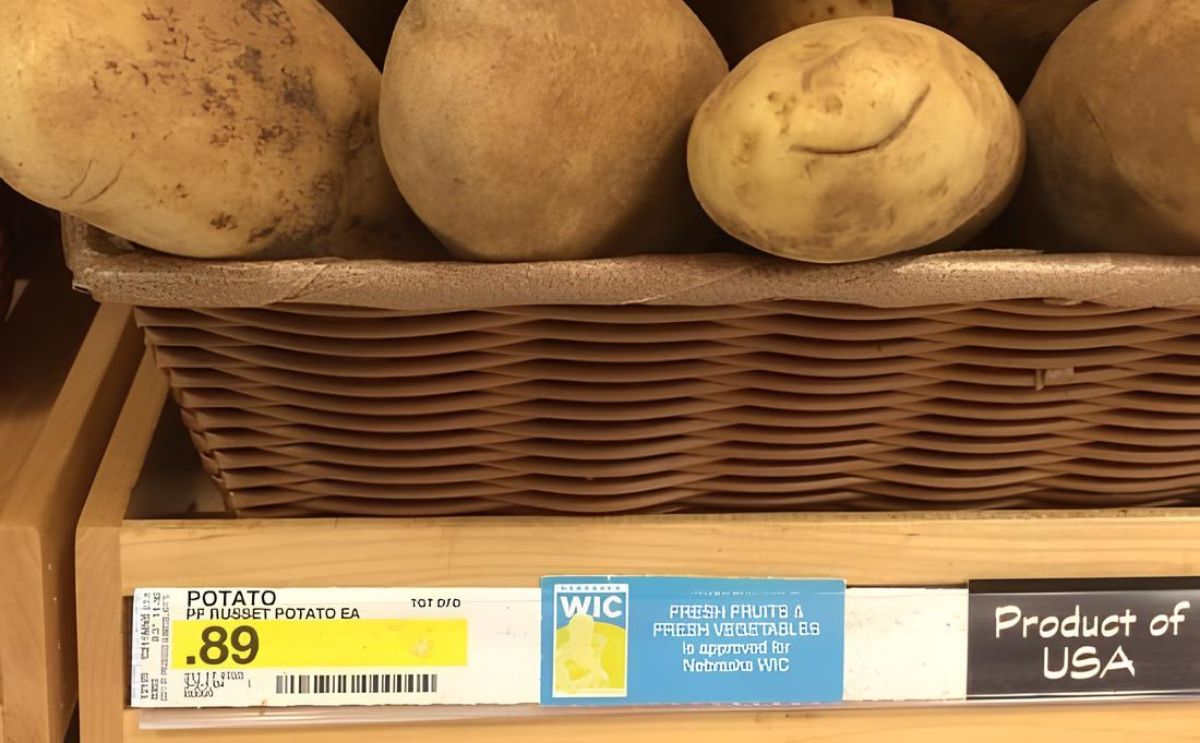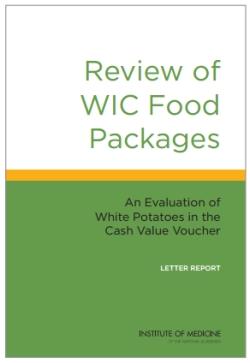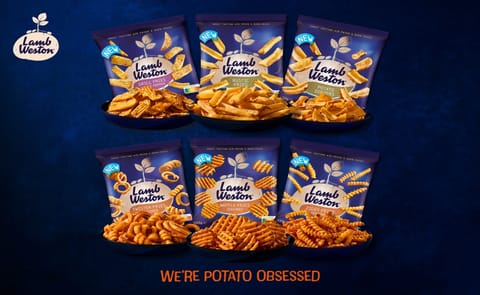National Potato Council applauds new IOM recommendation on white potatoes
National Potato Council applauds new IOM recommendation on white potatoes

Today, the National Academy of Science’s Institute of Medicine (IOM) released a report that is the first in a series to evaluate the U.S. Department of Agriculture’s Special Supplemental Nutrition Program for Women, Infants, and Children (WIC).
The report recommended that USDA allow fresh white potatoes to be an eligible vegetable for purchase using the WIC Cash Value Voucher. This change reversed previous IOM recommendations based on the 2005 Dietary Guidelines for Americans (DGA) and makes the fresh white potato recommendation in the WIC food packages consistent with the current 2010 DGA. The report noted that women and children in WIC are now consuming only 64 and 56 percent, respectively, of the amount of starchy vegetables recommended by the 2010 DGA.
Based on a review of consumption data from the 2007-2010 National Health and Nutrition Examination Survey, the committee highlighted the low intake by WIC participants of potassium and fiber, identified as nutrients of concern in both the 2005 and 2010 DGAs. The report highlighted the ability of white potatoes to provide these nutrients at low cost, consistent with other starchy vegetables with similar nutrient profiles already eligible for purchase with WIC Vouchers.
The National Potato Council applauds the review conducted by the IOM on the role of white potatoes in meeting the nutritional needs of WIC mothers and children.
Fresh white potatoes allow WIC participants to affordably add fiber and potassium to their diets and increase the positive value of their vouchers.
Review of WIC Food Packages
An Evaluation of White Potatoes in the Cash Value Voucher—
Letter Report;
Key Findings
At the request of the U.S. Department of Agriculture, an expert Institute of Medicine (IOM) committee is undertaking a comprehensive review of the food packages used in the Special Supplemental Nutrition Program for Women, Infants, and Children (WIC) to bring the program into alignment with current dietary guidelines.
In the first of three reports to result from this review, the IOM committee evaluates the 2009 regulation that excluded white potatoes from purchase with the WIC cash value voucher (CVV) and considers whether white potatoes should henceforth be allowed as a WIC-eligible vegetable in the CVV.
The committee’s key findings and conclusions are summarized below.
Findings
- Purchasing patterns for white potatoes: Insufficient evidence is available to suggest that ending the exclusion of white potatoes from purchase with the CVV would alter purchasing patterns for white potatoes or other WIC-eligible fruits and vegetables.
- National trends in potato production, use, and consumption: The committee does not find evidence to show that the availability or consumption of white potatoes changed as a result of the 2009 regulation to exclude white potatoes from the CVV.
- National survey data on white potato consumption: Potentially WIC-eligible white potatoes are defined as those that are fresh, frozen, canned, or dehydrated without added sugars, fats, or oils (or sodium for dehydrated potatoes). Such forms are commonly consumed at home. Up to 40 percent of all white potatoes consumed by WIC participants are likely to be in a potentially WIC-eligible form.
- Nutrient intakes of WIC populations: Intakes of calcium, potassium, and dietary fiber among low-income children, as well as intakes of vitamin C, vitamin D, calcium, potassium, iron, and dietary fiber among low-income women, fall short of current nutrient intake recommendations. Nutrient inadequacies are somewhat less likely among WIC-participating children than among children who are eligible for WIC but do not participate in the program.
- Diet quality of WIC populations: Diet quality measured by a validated index indicates that, on average, WIC populations achieve about half of the maximum score, a value based on 12 key recommendations in the 2010 Dietary Guidelines for Americans (DGA).
- Nutritional value of white potatoes: Overall, the nutrient profile of white potatoes is similar to that of other starchy vegetables that are currently permitted for purchase with the CVV. Because white potatoes are so widely consumed, they contribute useful quantities of potassium and fiber to Americans’ diets.
- Food group intakes among the WIC population: WIC participants’ intakes of all vegetable subgroups are below recommendations according to the 2010 DGA, although intakes of starchy vegetables are closer to recommended levels than for other subgroups.
- White potatoes and health outcomes: Consumption of fruits and vegetables may have longterm health benefits. The committee finds no direct evidence that consumption of white potatoes adversely affects health outcomes for WIC participants.
- Effects of including white potatoes in the CVV: On the basis of several scenarios (using fresh white potatoes) and a set of reasonable assumptions about purchase changes, allowing the purchase of white potatoes with the CVV will likely have little effect on overall consumption of fruits and vegetables or nutrient intake.
- Administration of the current CVV: Overall, the committee finds that vendors have been able to administer the CVV successfully, stock a variety of fruits and vegetables, and manage the exclusion of white potatoes.
- WIC participant satisfaction with the CVV: WIC participants report satisfaction with the CVV, although a significant proportion do not fully redeem the voucher
Conclusion
- The nutrient profile of white potatoes does not support their exclusion from the CVV because their nutrient content is similar to that of other starchy vegetables included in the CVV. Increased consumption of white potatoes could improve potassium intake for both women and children.
- WIC participants’ intake of all fruit and vegetable subgroups could be improved. Current consumption of starchy vegetables does not meet 2010 DGA recommendations for this food group.
- Overall diet quality for both WIC participants and WIC-eligible non-participants could be improved.
- Various cost-neutral shifts in the intake of fruit and vegetable subgroups to accommodate greater consumption of fresh white potatoes would not significantly affect the intake of food groups or nutrients or the selected indicator of diet quality.
- The 2009 exclusion of white potatoes has not been documented as a concern among WIC participants. Food vendors’ success in adapting to the 2009 exclusion suggests that the inclusion of white potatoes might be an equally smooth transition, although it may have some effect on stocking decisions in smaller stores.
- The committee’s recommendations should be re-evaluated if the 2015 DGA for consumption of starchy vegetables differs significantly from that of the 2010 DGA










